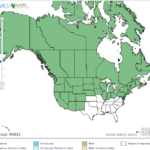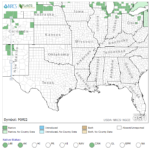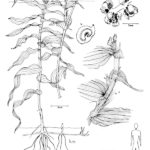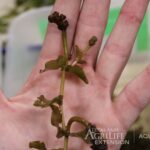Potamogeton richardsonii
USDA, NRCS. 2018. The PLANTS Database (http://plants.usda.gov, 28 March 2018). National Plant Data Team, Greensboro, NC 27401-4901 USA.
Illustration courtesy of University of Florida/IFAS Center for Aquatic and Invasive Plants. Used with permission.
What is Richardson’s Pondweed?
Physical Characteristics
Other common spellings and names include: redhead grass and red-head pondweed.
Leaves:
- Submersed
- Alternate to whorled
- Stalkless
- Heart shaped base
- Sword shaped blades
- 0.79-5.12 inches long
- 0.39-1.18 inches wide
- Wavy edges
Flowers:
- Small
- Clustered
- 4-12 whorls
- Spikes 0.79-1.57 inches long
Fruit:
- Small
- Dry
- One seeded
- Does not open to release seed when ripe
- 0.98-1.57 inches long
Stem:
Where Does it Grow?
Richardson’s pondweed can be found in ponds, lakes, and slow-moving streams.
Pros and Cons of Richardson’s Pondweed
Submerged portions of all aquatic plants provide habitats for many micro and macro invertebrates. These invertebrates in turn are used as food by fish and other wildlife species (e.g. amphibians, reptiles, ducks, etc.). After aquatic plants die, their decomposition by bacteria and fungi provides food (called “detritus”) for many aquatic invertebrates.







